When it comes to pickup trucks, most people focus on horsepower, towing capacity, or off-road performance—but storage, especially interior storage, is often overlooked.
Yet for many truck owners, smart use of cabin space is a game-changer. Whether you’re a contractor hauling tools, a weekend adventurer packing gear, or a parent juggling sports equipment and groceries, having well-designed under-seat storage can make a massive difference in day-to-day usability.
Some trucks excel in this department, offering clever compartments, lockable bins, or fold-flat platforms that turn wasted space into practical utility. Others? Not so much. Despite their size, some pickups completely drop the ball, offering awkward, limited, or non-existent under-seat storage that forces drivers to improvise or leave valuable space unused.
Trucks With the Best Storage Under Seats
In this article, we’re breaking down 5 trucks that truly deliver when it comes to under-seat storage—and 5 that waste the opportunity entirely. If you’re in the market for a truck or just want to know if your current ride is making the most of its interior real estate, read on. You might be surprised by which models shine and which ones come up short.
1. Ford F-150
The Ford F-150 leads the pack with its clever rear under-seat storage system, especially in crew cab models.
A fold-out locking storage box gives you the flexibility to stow tools, gear, and electronics securely. The box can be divided for organization and even locks when the rear seat is down.
Ford also designed the floor to be flat, making it easier to load bulky items. It’s a thoughtful execution for those who want form and function.
When most people think of a pickup truck, the Ford F-150 is usually the first model that comes to mind. As a long-standing best-seller, the F-150 has continued to evolve with the times.
Today’s version includes an aluminum body, a range of turbocharged engines, a hybrid powertrain, and even an all-electric variant (reviewed separately). Ford has equipped the F-150 with its most advanced technology across the lineup. If you’re looking for a no-nonsense work truck, the base XL trim offers exactly what you need without the extras.
However, as you move up the trim levels, features increase—and so do the prices. For those with an adventurous streak, the Tremor trim brings off-road capability, while the Platinum and Limited models bring a level of interior refinement and luxury that rivals Lincoln.
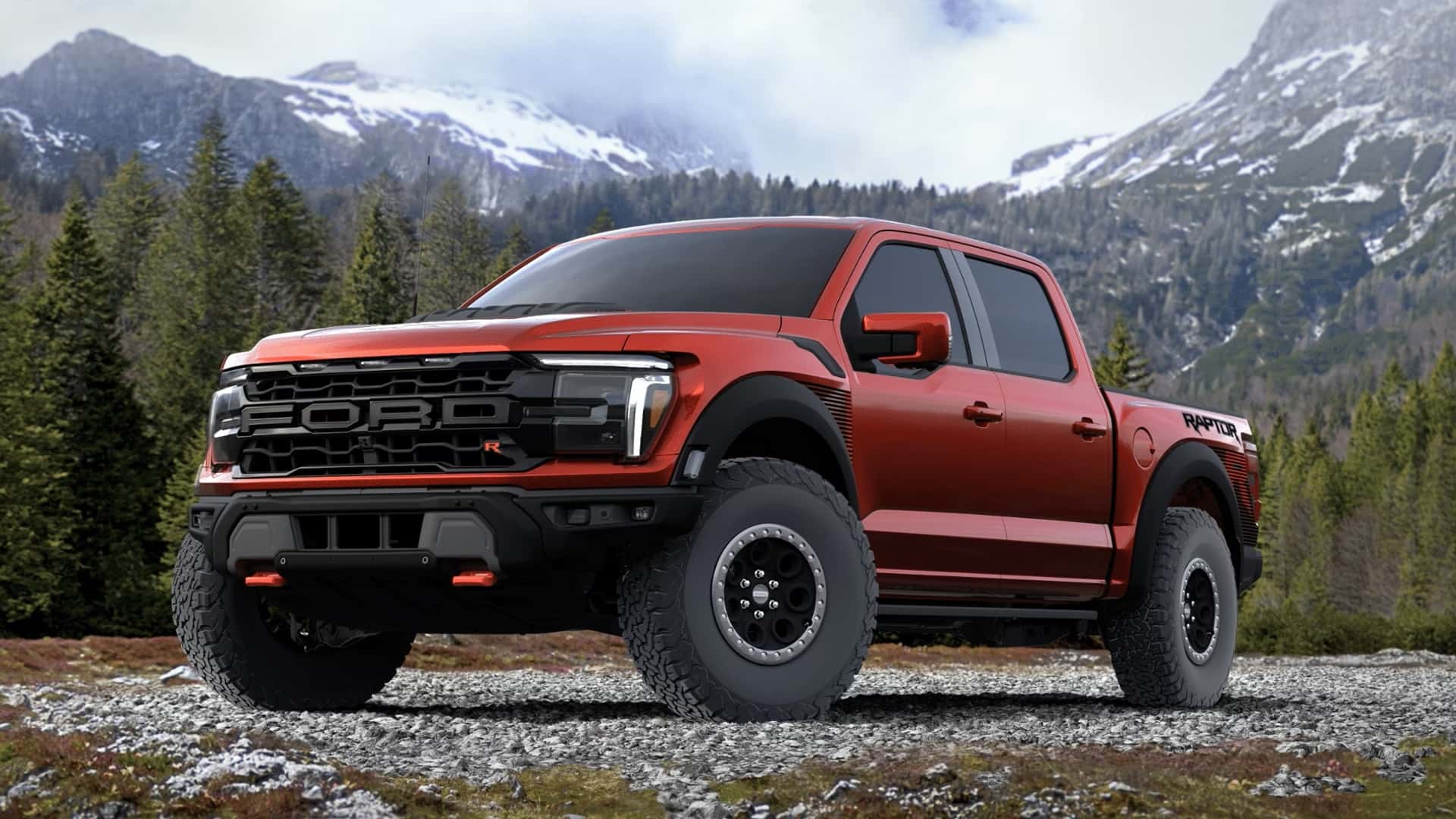
The F-150 doesn’t offer the same smooth ride quality as the Ram 1500, nor does it handle quite as sharply as the Chevrolet Silverado, but it remains a versatile, powerful, and highly configurable truck that covers a broad range of needs. Its adaptability and consistently strong performance are part of the reason it continues to generate loyalty and dominate sales year after year.
For 2023, Ford introduced a new off-road-oriented trim called the Rattler. Built on the XL FX4 foundation, the Rattler includes unique 18-inch wheels, a dual-exhaust setup, hill-descent control, a locking rear differential, and an upgraded off-road suspension.
It also features distinct rattlesnake-themed badging throughout the design. Its placement in the lineup offers a more affordable option for buyers seeking trail-readiness without paying the premium for the Tremor or Raptor models.
The 2023 Ford F-150 starts at $35,830 and climbs to $84,115 depending on trim and options. The available trims include XL, XLT, Rattler, Heritage Edition, Lariat, Tremor, King Ranch, Platinum, and Limited.
While the XLT serves as a practical step up from the base model, the Lariat hits the sweet spot for many buyers. Though it’s nearly $10,000 more than the XLT, it balances comfort, tech, and value better than most trims in the lineup.
Under the hood, the F-150 offers an array of engine choices: a 290-hp 3.3-liter V-6, a 400-hp 5.0-liter V-8, a 325-hp twin-turbo 2.7-liter V-6, a 400-hp twin-turbo 3.5-liter V-6, and a 250-hp 3.0-liter diesel V-6.
All are paired with a 10-speed automatic transmission. For the first time, Ford now offers a hybrid powertrain, combining a 3.5-liter twin-turbo V-6 with a 35 kW electric motor and the same 10-speed automatic.
This setup delivers 400 horsepower and, according to Ford, can provide up to 700 miles of range on a full tank. It can also power an onboard generator, which is especially useful for job sites or emergency use. Buyers can choose between rear-wheel or four-wheel drive, regardless of the engine.
During testing, a four-wheel-drive Lariat hybrid model accelerated from 0 to 60 mph in just 5.4 seconds. It delivers a comfortable ride and predictable handling overall, though high-end trims like the King Ranch benefit from variable-assist steering that improves low-speed agility.
For off-road performance, the Tremor trim is the standout, equipped with 33-inch all-terrain tires, a specialized suspension system, a locking rear differential, and a four-wheel-drive transfer case borrowed from the F-150 Raptor. At the test track, the Tremor reached 60 mph in 5.3 seconds—just a tenth of a second slower than the more powerful Raptor.
Also Read: 12 Popular Cars Everyone Hates and 10 That Drivers Actually Love
2. Ram 1500
Ram’s rear seat storage is among the most versatile in the business. The Ram 1500 offers a deep, molded storage bin beneath the rear seats that’s perfect for jumper cables, tools, or emergency kits.
It also features a flat load floor and available fold-out floor panels that double as mini shelves. Combined with the RamBox bed storage system, it’s one of the most utility-focused trucks on the market.
When most people think of a pickup truck, the Ford F-150 is usually the first model that comes to mind. As a long-standing best-seller, the F-150 has continued to evolve with the times.
Today’s version includes an aluminum body, a range of turbocharged engines, a hybrid powertrain, and even an all-electric variant (reviewed separately). Ford has equipped the F-150 with its most advanced technology across the lineup. If you’re looking for a no-nonsense work truck, the base XL trim offers exactly what you need without the extras.
However, as you move up the trim levels, features increase—and so do the prices. For those with an adventurous streak, the Tremor trim brings off-road capability, while the Platinum and Limited models bring a level of interior refinement and luxury that rivals Lincoln.
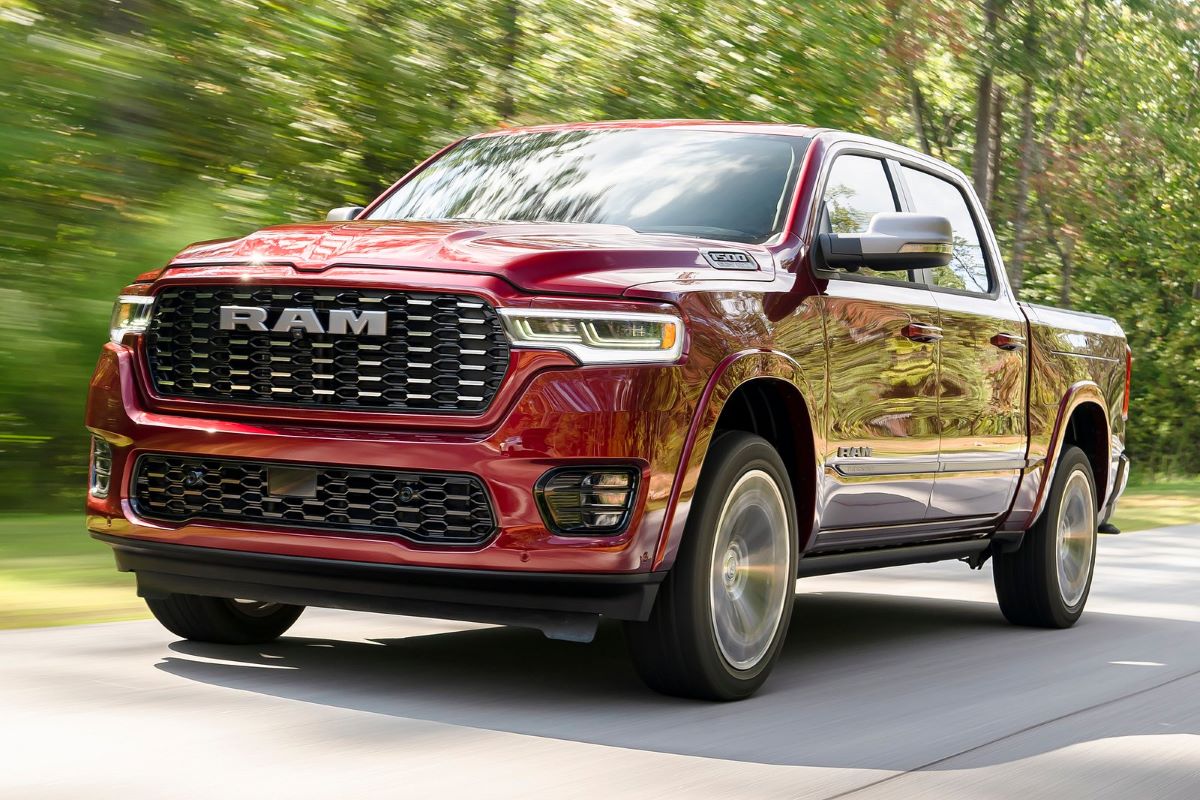
The F-150 doesn’t offer the same smooth ride quality as the Ram 1500, nor does it handle quite as sharply as the Chevrolet Silverado, but it remains a versatile, powerful, and highly configurable truck that covers a broad range of needs. Its adaptability and consistently strong performance are part of the reason it continues to generate loyalty and dominate sales year after year.
For 2023, Ford introduced a new off-road-oriented trim called the Rattler. Built on the XL FX4 foundation, the Rattler includes unique 18-inch wheels, a dual-exhaust setup, hill-descent control, a locking rear differential, and an upgraded off-road suspension.
It also features distinct rattlesnake-themed badging throughout the design. Its placement in the lineup offers a more affordable option for buyers seeking trail-readiness without paying the premium for the Tremor or Raptor models.
The 2023 Ford F-150 starts at $35,830 and climbs to $84,115 depending on trim and options. The available trims include XL, XLT, Rattler, Heritage Edition, Lariat, Tremor, King Ranch, Platinum, and Limited.
While the XLT serves as a practical step up from the base model, the Lariat hits the sweet spot for many buyers. Though it’s nearly $10,000 more than the XLT, it balances comfort, tech, and value better than most trims in the lineup.
Under the hood, the F-150 offers an array of engine choices: a 290-hp 3.3-liter V-6, a 400-hp 5.0-liter V-8, a 325-hp twin-turbo 2.7-liter V-6, a 400-hp twin-turbo 3.5-liter V-6, and a 250-hp 3.0-liter diesel V-6.
All are paired with a 10-speed automatic transmission. For the first time, Ford now offers a hybrid powertrain, combining a 3.5-liter twin-turbo V-6 with a 35 kW electric motor and the same 10-speed automatic.
This setup delivers 400 horsepower and, according to Ford, can provide up to 700 miles of range on a full tank. It can also power an onboard generator, which is especially useful for job sites or emergency use. Buyers can choose between rear-wheel or four-wheel drive, regardless of the engine.
During testing, a four-wheel-drive Lariat hybrid model accelerated from 0 to 60 mph in just 5.4 seconds. It delivers a comfortable ride and predictable handling overall, though high-end trims like the King Ranch benefit from variable-assist steering that improves low-speed agility.
For off-road performance, the Tremor trim is the standout, equipped with 33-inch all-terrain tires, a specialized suspension system, a locking rear differential, and a four-wheel-drive transfer case borrowed from the F-150 Raptor. At the test track, the Tremor reached 60 mph in 5.3 seconds—just a tenth of a second slower than the more powerful Raptor.
3. Chevrolet Silverado 1500
Chevy offers under-seat storage that’s both spacious and smartly designed. The split bench allows for partial seat lifts to access divided compartments.
Higher trims get a factory storage organizer with separate bins to prevent cargo from sliding around. Additionally, the Silverado’s rear seatbacks offer hidden compartments another clever layer of interior utility.
The 2025 Chevrolet Silverado 1500 kicks off with a starting price of $37,000 and earns a solid MT Score of 8.4 out of 10. In terms of dimensions, it measures 210.9 inches in length, 81.1 inches in width, and 75.7 inches in height.
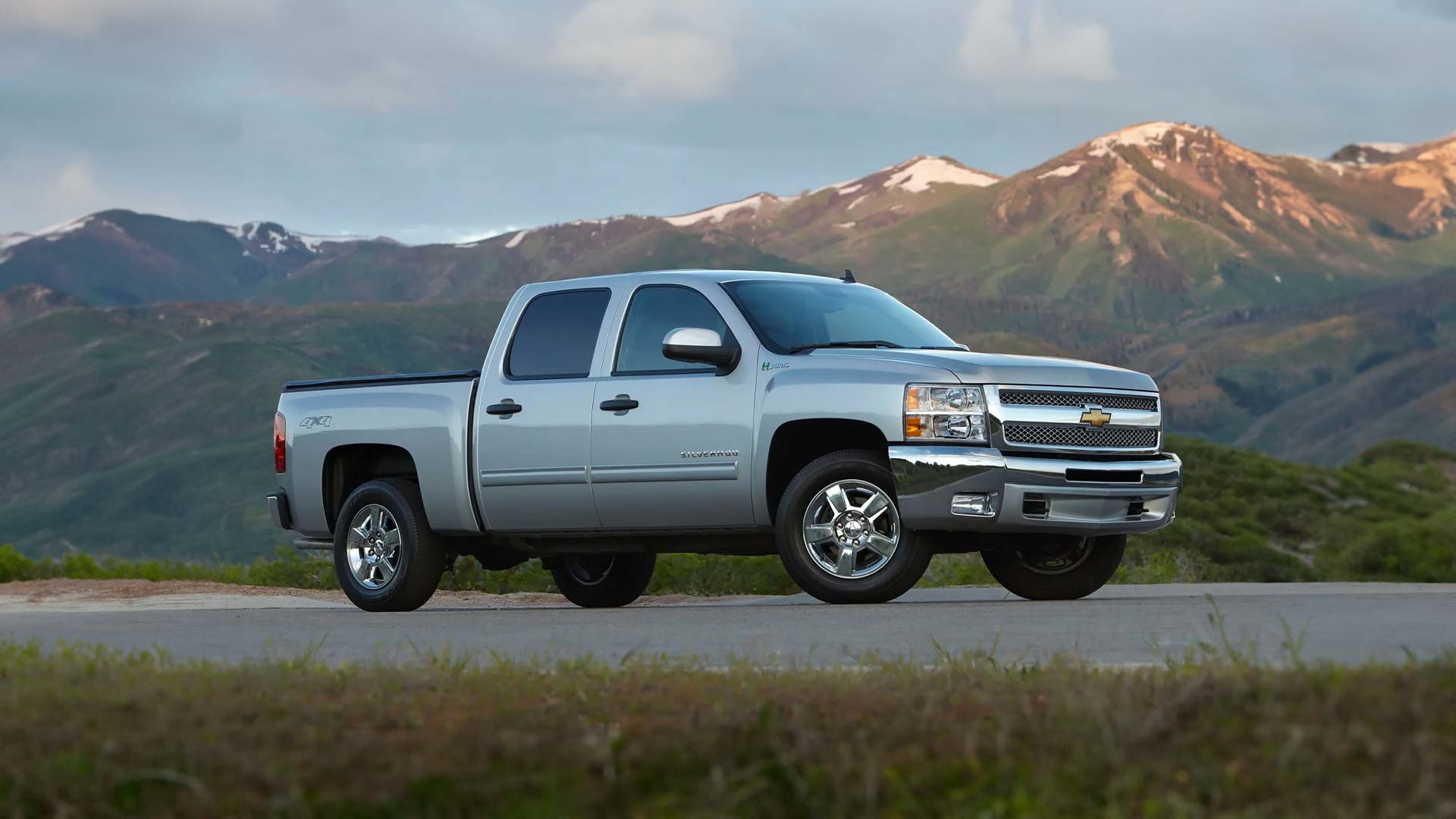
While its wheelbase and cargo capacity figures aren’t listed, the truck offers seating for three. Inside the cabin, front headroom is a generous 43.1 inches, while front legroom stretches to 44.5 inches. The front shoulder room comes in at 66.0 inches, though rear passenger space details remain unspecified.
This specific configuration—the Work Truck 1WT 2WD Short Bed Regular Cab—comes equipped with a 2.7-liter TurboMax inline 4-cylinder engine that delivers 310 horsepower at 5600 rpm and 420 lb-ft of torque at just 1500 rpm. The curb weight is listed at 4,410 pounds, and the maximum payload capacity reaches 2,290 pounds.
Ground clearance is 7.9 inches, and the truck has a Gross Vehicle Weight Rating (GVWR) of 6,700 pounds. While towing capacity, fuel economy (MPG), and engine size aren’t detailed, the truck does offer a respectable driving range of 456 miles.
Fuel type is unleaded, and the transmission is a Hydra-Matic automatic with manual mode, with an optional automatic featuring the same capability. Power is delivered to the rear wheels (RWD), and the engine’s cylinder configuration is inline with a total of four cylinders. As for classification, the vehicle’s specific class has not been provided.
4. Honda Ridgeline
While the Ridgeline isn’t a traditional body-on-frame truck, it makes exceptional use of interior space. Its 60/40-split rear seats fold up to reveal a wide and flat storage area below big enough to fit a full-size cooler or suitcase.
It doesn’t offer locking storage under the seat, but the open and wide design is excellent for larger gear, and Honda supplements this with the class-exclusive in-bed trunk.
The Honda Ridgeline has consistently ranked as one of our top choices among midsize pickups, thanks to its smooth ride quality and spacious interior. While it may fall short compared to some competitors in terms of maximum towing capacity and serious off-road capability, it remains arguably the most practical and well-rounded option in the segment.
The main drawback? Its age. This generation of Ridgeline has been on the market since 2017, and during that time, nearly every other midsize truck has undergone a full redesign or entered the market as an all-new model. Although Honda has no plans to redesign the Ridgeline for 2025, we believe a significant overhaul is likely on the horizon.
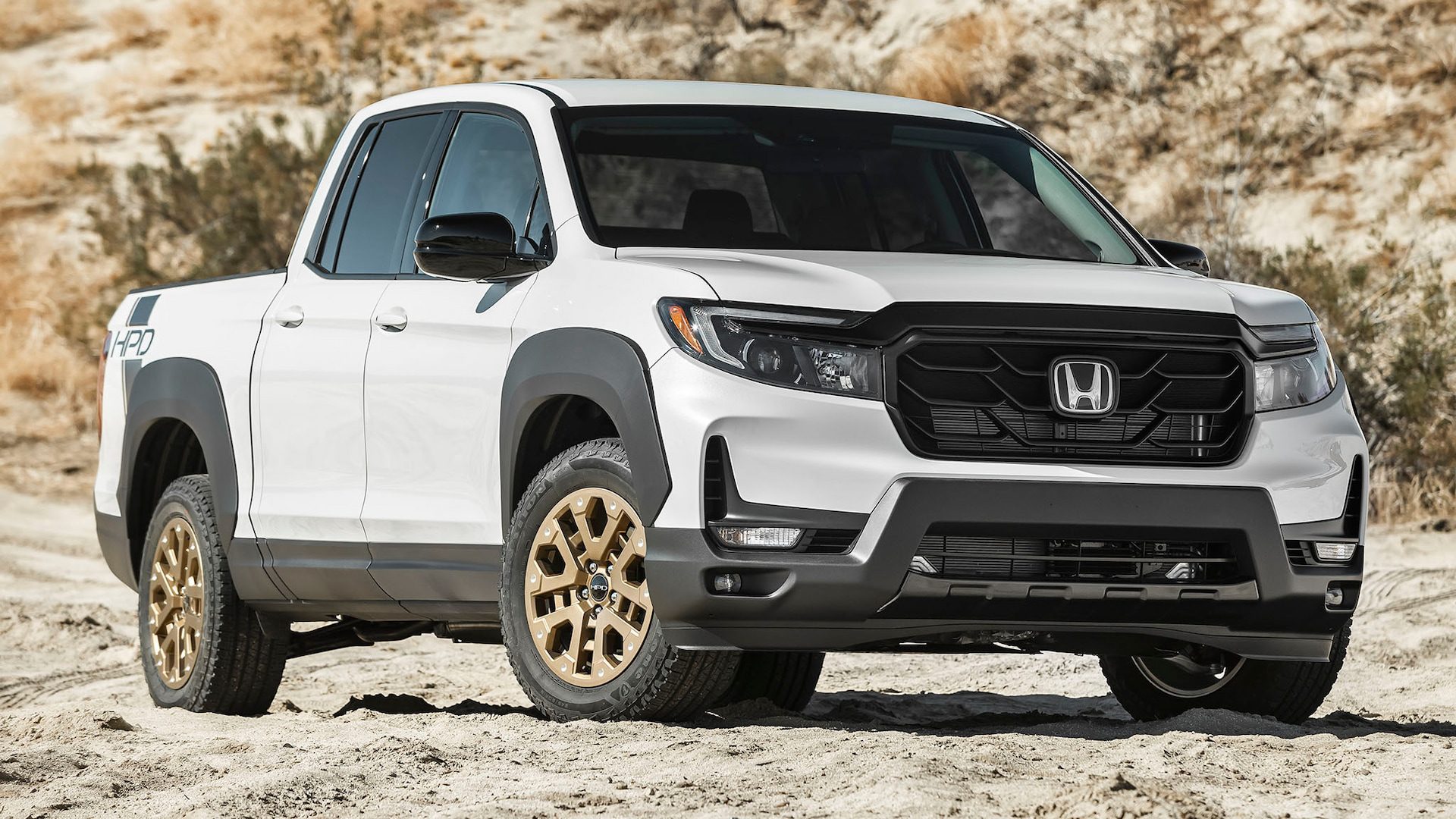
The cost to drive the Ridgeline remains reasonable. In North Dakota, for example, monthly estimates come in at around $188 for the Ridgeline Sport, compared to $226 per month for the average large truck.
Underneath, the Ridgeline shares its platform with the three-row Honda Pilot SUV—specifically, the prior generation of that vehicle. The Pilot received a redesign in 2023, and its two-row sibling, the Honda Passport, is expected to get a full update for the 2026 model year. That means the Ridgeline probably isn’t far behind.
Should you wait for the next-gen version? Not necessarily. While we anticipate a fresh exterior design and enhanced technology, Honda is unlikely to abandon the Ridgeline’s core mission: focusing on everyday usability rather than hardcore, traditional truck traits.
5. Toyota Tundra (2022 and newer)
The redesigned Tundra features under-seat bins that are actually useful compared to past generations. The CrewMax versions have a long, lidded compartment beneath the rear bench, ideal for gear, recovery straps, and more.
It’s removable too, allowing owners to adjust the space to their needs. It may not be the biggest, but it’s functional and easy to access.
As the automotive world continues to shift and progress, the 2025 Toyota Tundra emerges as a prime example of innovation, strength, and refined luxury.
Packed with updates—from the debut of the TRD Rally Package to the seamless integration of next-gen tech—the Tundra reshapes the expectations for full-size pickup trucks. This detailed overview explores the standout features and updates that keep the 2025 Tundra firmly positioned as a top competitor in its segment.
One of the most exciting additions is the unveiling of the TRD Rally Package, a clear tribute to Toyota’s storied legacy in Baja racing. Far from being just an appearance package, the TRD Rally Package elevates both the truck’s off-road capability and visual presence.
“The TRD Rally Package is infused with Toyota’s classic red, orange, and yellow racing colors.” These striking elements are featured prominently on the Tundra’s exterior, giving the truck a bold, instantly recognizable look.
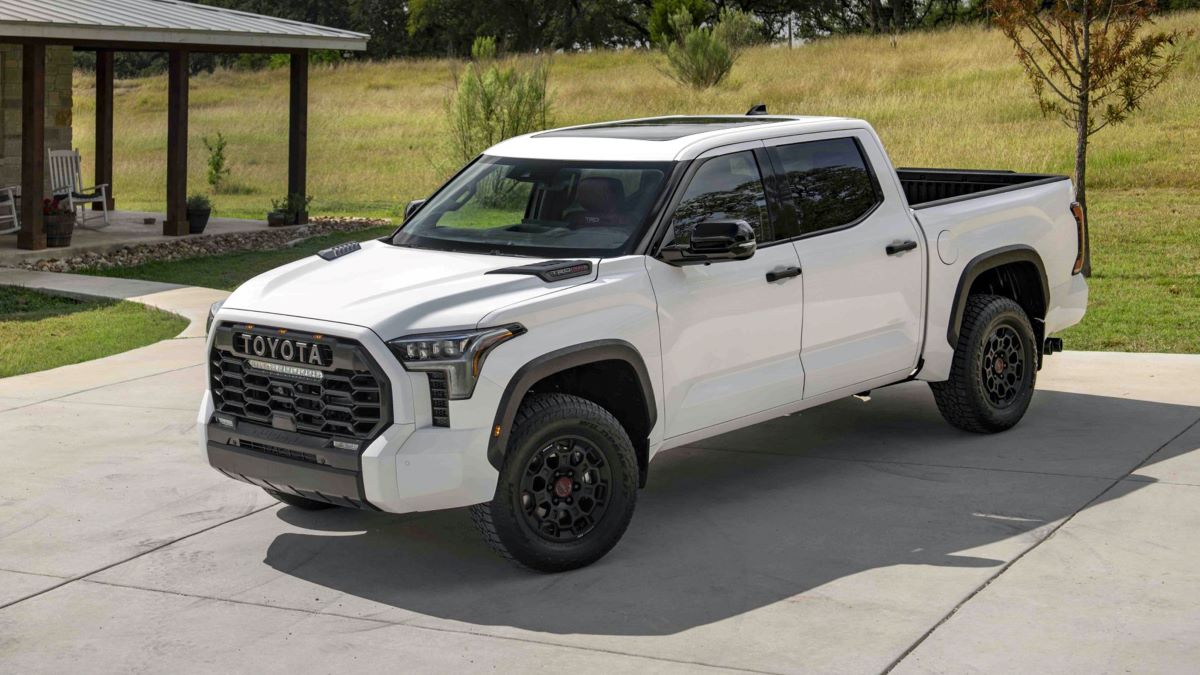
On the performance side, the truck rides on 18-inch TRD off-road wheels paired with all-terrain tires, while Bilstein shocks and durable skid plates offer the rugged hardware needed to tackle serious terrain.
Complementing these upgrades are an electronically controlled locking rear differential, Multi-Terrain Select, and Crawl Control—all designed to enhance confidence and control in varied off-road situations. Inside the cabin, the TRD Rally Package maintains its distinctive theme.
“Inside, the TRD Rally Package continues to impress with SoftTex-trimmed seats and dashboard accents that echo the exterior’s vibrant color scheme.” This cohesive design ensures the truck feels as exciting on the inside as it looks on the outside, merging comfort with a purposeful aesthetic.
Beyond off-road grit, the 2025 Tundra also introduces a new level of comfort-focused luxury with the addition of massaging front seats. These seats, available in the 1794, Platinum, and Capstone grades, add a premium touch that turns every drive into something far more enjoyable.
“The leather-trimmed seats are equipped with 10-way power adjustment,” offering ample flexibility for drivers and passengers to fine-tune their seating position with ease.
Taking it a step further, “Tailor your relaxation with upper and lower body massage options, adjustable through the intuitive 14-inch multimedia touchscreen.” Whether you’re enduring a long-haul journey or navigating a bumper-to-bumper commute, these advanced seats make sure relaxation and comfort remain front and center.
Also Read: 5 Pickups With Top Factory Suspension Lifts And 5 That Are Low
Trucks Wasting Space Under the Seats
Not every pickup lives up to its potential when it comes to interior storage. Some manufacturers seem to forget that modern truck owners need more than just a flat bench and a big bed—they need functional space inside the cab, too.
Under-seat storage should be standard by now, but some models still miss the mark with shallow compartments, awkward layouts, or no storage at all.
1. Nissan Titan
Despite being a full-size truck, the Titan disappoints with its under-seat storage. The rear seats fold up, but the available storage is small and shallow.
It lacks proper dividers or lids, and much of the space is unusable due to the raised floor and seat brackets. It’s a missed opportunity in a segment where every inch counts.
With the 2024 Titan, Nissan aims squarely at the most in-demand full-size light-duty pickup truck configurations, placing emphasis on delivering value, off-road capability, and a touch of luxury. A V8 engine comes standard on every Titan, giving it a solid foundation of power.
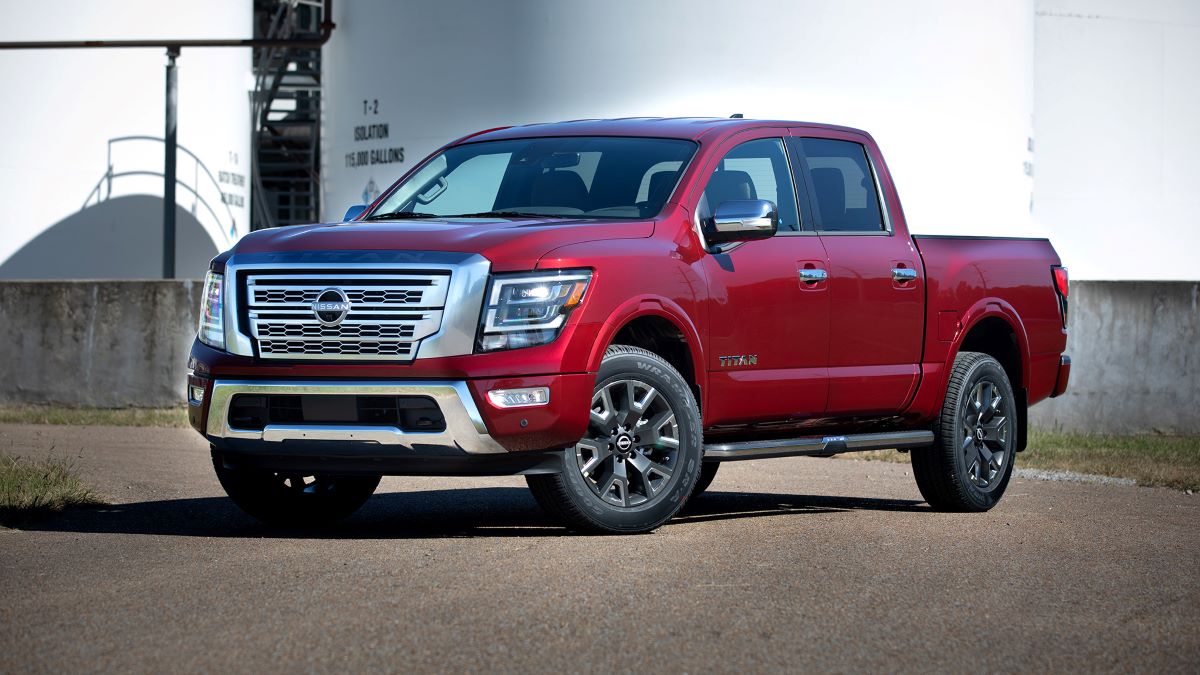
However, “even with a V8, the Titan falls short of competitors when it comes to towing trailers, hauling payload and fuel economy.”
Despite its consistent performance, the Titan lags behind in these critical areas. One reason for this is the truck’s aging platform. The design and engineering behind the Titan date all the way back to 2016, making it the longest-serving model in its segment without a full redesign—and unfortunately, “its age shows.”
2. GMC Canyon (Pre-2023)
The older-generation GMC Canyon makes almost no attempt to provide meaningful under-seat storage. While the rear seat bottoms lift up, all you’ll find underneath is exposed metal and the jack.
There’s no tray or bin system offered, and the limited rear seat space already compromises the usability of that area.
There’s only one engine to choose from with the AT4X AEV Edition: a turbocharged 2.7-liter inline-four making 310 horsepower and 430 pound-feet of torque.
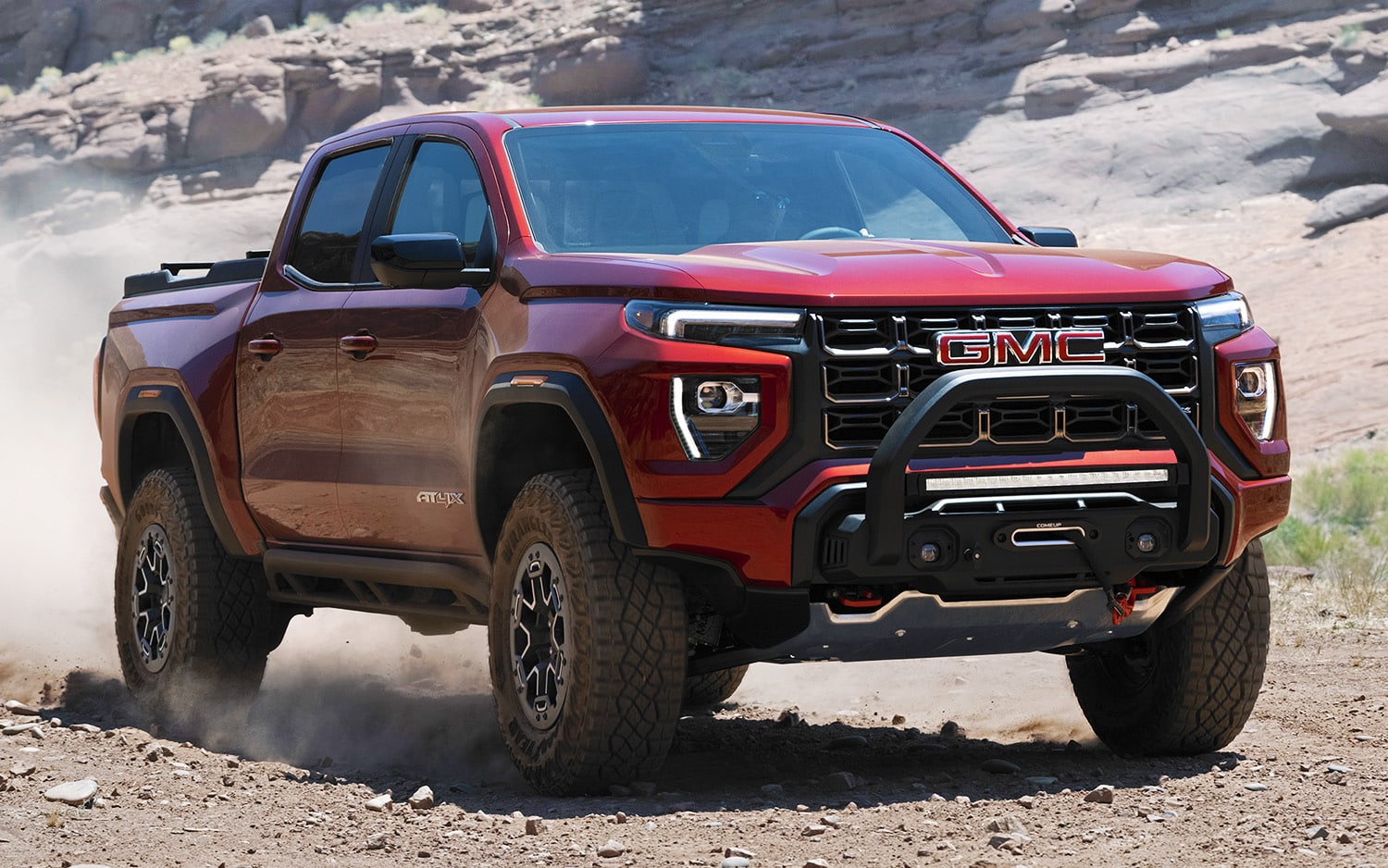
It’s paired to an eight-speed automatic transmission and a two-speed transfer case offering high- and low-range gears for rock crawling. Drivers can choose between 2WD high, 4WD high, or 4WD low. There’s also an Auto function that can switch between 2WD and 4WD, depending on drive mode and road conditions.
The engine is almost diesel-like in its power delivery, with lots of punch down low. Redline is just over 6,000 rpm, though you’ll never get near that in normal driving conditions.
The meat of the power is between 2,500 and 4,500 rpm, and the eight-speed does a good job of keeping the engine there, whether you’re cruising on the highway or creeping up a rocky hill. There’s a bit more buzz in the cabin than I’d like, though it’s tough to expect a truck that looks like this to be incredibly quiet or refined.
3. Toyota Tacoma
The Tacoma is beloved for its off-road chops, but its rear storage solutions leave much to be desired.
The access cab has jump seats with little room beneath, while the crew cab versions have a small, molded area that’s barely big enough for a tool pouch. There’s no lockable or modular storage option, and the space is too tight for practical use.
Every 2024 Tacoma is powered by a turbocharged 2.4-liter four-cylinder engine, but this engine is offered in two distinct versions and can be matched with either an eight-speed automatic or a six-speed manual transmission. Buyers have the option of rear-wheel or four-wheel drive.
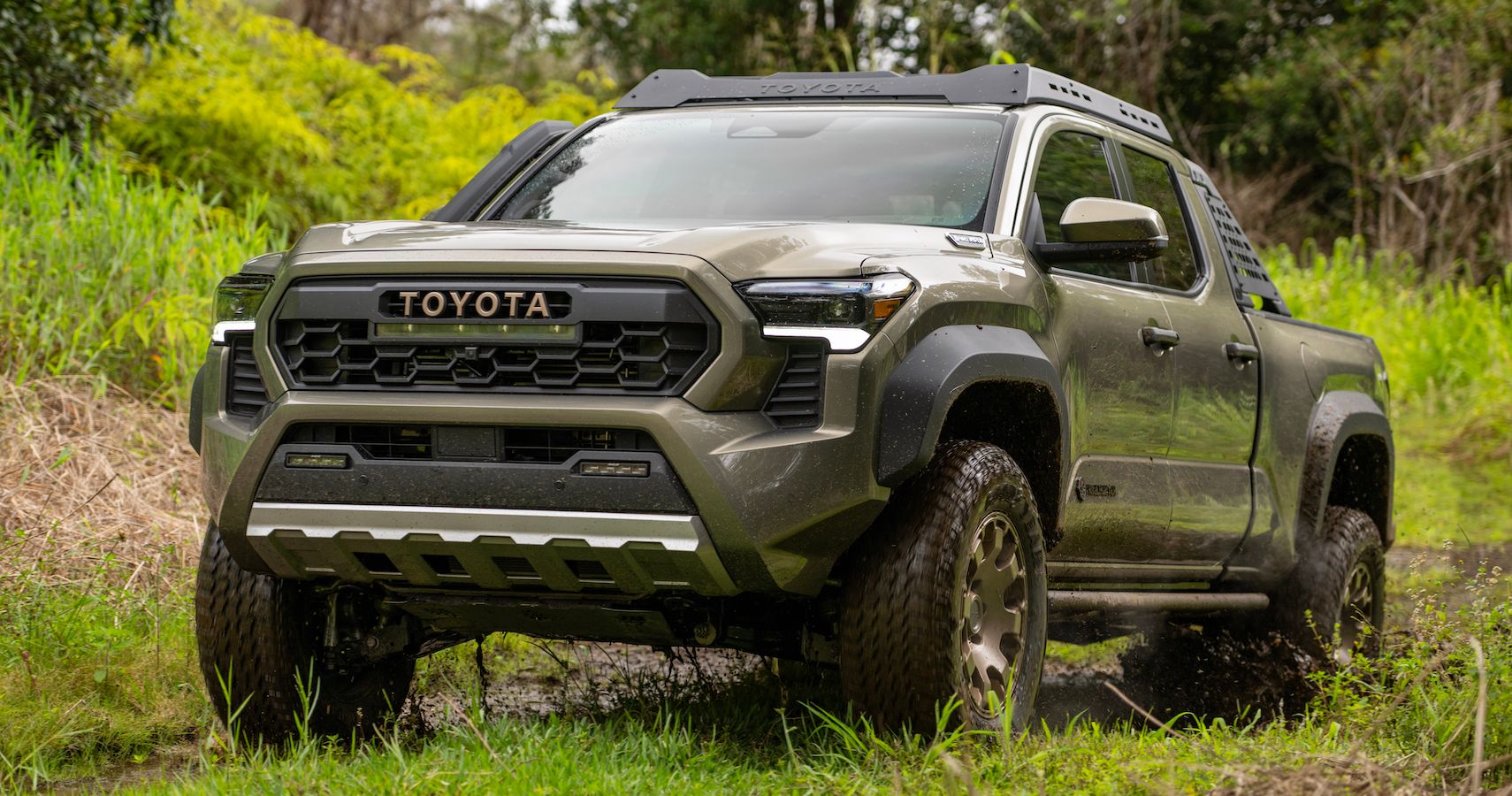
“The base 228-hp turbo four is only found in the entry-level SR,” while the rest of the Tacoma lineup receives more powerful i-Force versions that deliver up to 278 horsepower and 317 pound-feet of torque. Though all Tacomas are built using a traditional body-on-frame design, there are two types of rear suspension systems.
The SR, SR5 extended cab, and TRD PreRunner utilize traditional leaf springs, “whereas the rest have coil springs.” This suspension setup plays a big role in ride comfort.
During our drive of the nonhybrid Tacoma, we were impressed by the truck’s improved on-road composure—“especially models with the new coil springs, which offer a significantly improved ride over those with the older leaf spring hardware.” Performance is solid as well; when we tested the version with the 278-hp engine, it sprinted to 60 mph in 7.0 seconds.
Around town, the turbo-four delivers strong and responsive power, making highway merges and passing easy and stress-free. And because off-road prowess is a hallmark of the Tacoma’s identity, “the off-road-focused models come with the hardware to go almost everywhere.”
4. Chevrolet Colorado (Pre-2023)
Much like its GMC cousin, the previous-generation Colorado had minimal under-seat storage. The rear seats flip up, but the compartments underneath are either nonexistent or laughably shallow.
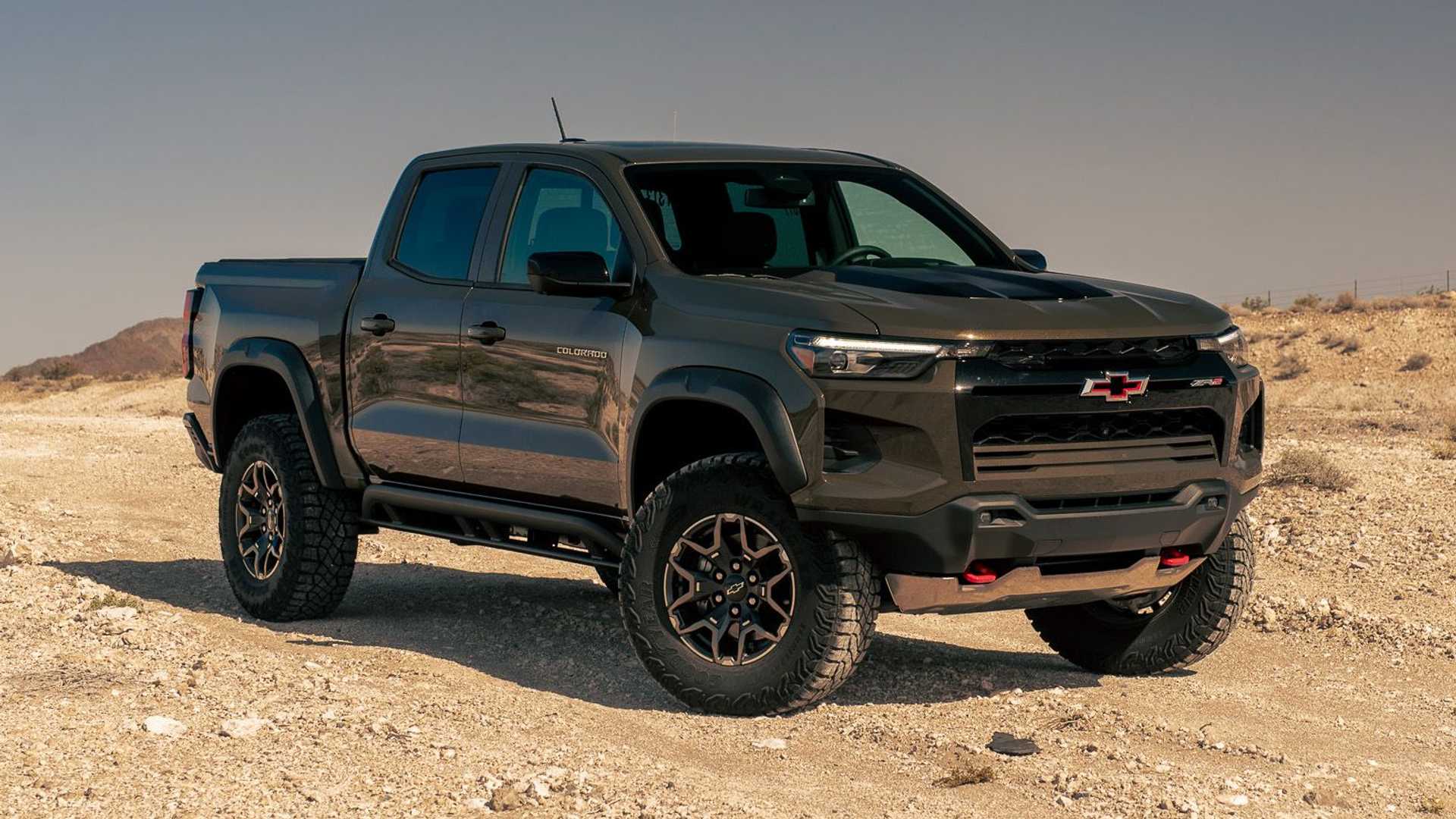
Owners often have to resort to aftermarket organizers to gain any real usability. The 2025 Chevrolet Colorado Trims present a versatile and well-rounded lineup of midsize pickup trucks, built to satisfy a wide range of drivers—from those in need of a reliable work truck to off-road enthusiasts seeking serious trail performance.
For this model year, Chevrolet has streamlined the powertrain across the board by equipping every Colorado trim with the standard 2.7L TurboMax engine, which delivers an impressive 310 horsepower and 430 lb.-ft. of torque.
This engine is paired with an 8-speed automatic transmission, offering both power and smooth drivability. The five available trims—Work Truck (WT), LT, Trail Boss, Z71, and ZR2—allow Chevrolet to cater to different lifestyles and driving needs, whether it’s for daily commuting, heavy-duty work, or recreational use.
This guide takes a deep dive into each trim’s unique features, performance capabilities, and value to help you decide which version of the 2025 Colorado best fits your priorities. For official specifications, Chevrolet’s 2025 Colorado page offers a detailed overview of the full lineup.
What makes the 2025 Chevrolet Colorado stand out is its ability to balance rugged capability with modern tech and comfort. The TurboMax engine, now standard across all trims, not only gives the truck class-leading towing capacity of up to 7,700 pounds but also ensures it holds its own in the highly competitive midsize truck market.
Inside, features like an 11.3-inch touchscreen with Google built-in and robust driver assistance technologies help make the Colorado a compelling choice. Those interested in comparisons with rival pickups can refer to Car and Driver’s expert review of the 2025 Chevy Colorado for a more comprehensive take.
At the base of the lineup is the Work Truck (WT), a straightforward, functional option that prioritizes reliability and affordability. The WT trim is powered by the same 2.7L TurboMax engine, offering the same output and performance metrics as higher trims.
It comes standard with rear-wheel drive, though four-wheel drive is available. The WT rides on 17-inch Ultra Silver Metallic wheels with all-season tires designed for tough work environments.
Inside, the cabin focuses on practicality, featuring vinyl seats, rubber floor mats, and an 11.3-inch touchscreen with Apple CarPlay and Android Auto integration. Chevy Safety Assist comes standard, including forward collision warning, lane departure warning, and automatic emergency braking.
The LT trim builds on the WT’s strong foundation by blending capability with a higher level of comfort and convenience. It retains the 2.7L TurboMax engine and offers the same 7,700-pound towing capacity. Enhancements such as 17-inch Argent Metallic wheels, a remote-locking EZ Lift and Lower tailgate, and available wireless charging add to its value.
The LT also includes conveniences like keyless entry, remote start, and rear air vents, which make it ideal for daily drivers and small business owners alike. Inside, cloth seats (heated with select packages), carpeted floor mats, and a rear USB port make the cabin more accommodating.
5. Ford Ranger
The Ranger’s rear seat setup isn’t ideal for storage-minded buyers. While there is technically a little room beneath the bench, it’s compromised by the jack, wiring harnesses, and odd seat mounts.
Ford didn’t equip it with any molded bins or secure storage trays, which feels like a step backward compared to the innovation seen in the F-150.
The 2025 Ford Ranger comes standard with a 2.3-liter turbocharged inline four-cylinder engine that delivers a robust 270 horsepower and 310 lb-ft of torque.
This powertrain enables the Ranger to accelerate from 0 to 60 mph in just 6.9 seconds. Depending on how it’s configured, this setup also offers respectable fuel economy, achieving 20-21 mpg in the city and 24-25 mpg on the highway.

For drivers seeking more performance, Ford offers an available 2.7-liter twin-turbocharged V6 that bumps output to 315 horsepower and 400 lb-ft of torque. This engine reduces the 0-60 mph time to a quicker 6.3 seconds.
At the top of the performance spectrum, the Ranger Raptor is equipped with a 3.0-liter twin-turbo V6 producing an impressive 405 horsepower and 430 lb-ft of torque. Although its fuel economy drops to 16 mpg city and 18 mpg highway, it makes up for it with sheer speed, clocking a MotorTrend-tested 0-60 time of just 5.8 seconds.
No matter which engine you choose, every 2025 Ranger is paired with a 10-speed automatic transmission. Buyers can opt for either rear-wheel drive or four-wheel drive, depending on their needs and preferences.
In the world of pickups, under-seat storage can be the difference between a cluttered cabin and a clean, organized one. Trucks like the Ford F-150, Ram 1500, and Honda Ridgeline prove that smart design can make every inch count.
Meanwhile, models like the Nissan Titan and Ford Ranger still haven’t optimized this often-wasted space. Whether you’re a contractor, adventurer, or just a gear-heavy commuter, under-seat storage is one of those small details that makes a big impact.

